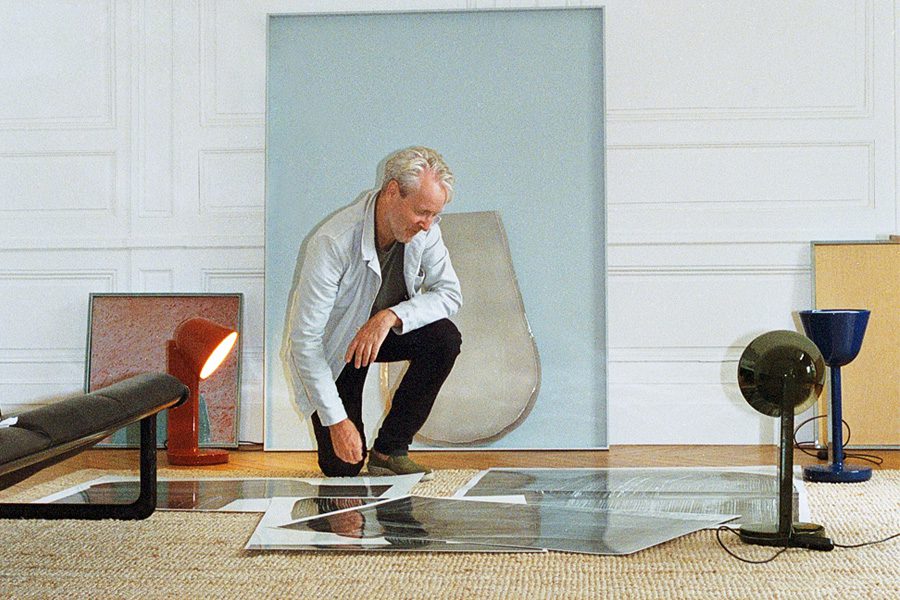Since founding their New York firm Roman and Williams in 2002, Stephen Alesch and Robin Standefer’s designs have been setting the standard for experiential restaurants (Le Coucou, Upland, and the Dutch, all in New York) and lifestyle hotels (Ace Hotel, the Standard, the Royalton, and Freehand, to name a few) with interiors that seamlessly blend the old and the new with the sort of romanticism that makes guests want to linger. True artisans at heart (having started in production and set design), they have also been sketching and creating their own furniture and lighting pieces since the start, always toying with a formal licensing deal, but never pulling the trigger, until they opened the Guild.
Housed in what was once the oldest luxury department store in America, Arnold, Constable & Company, in New York’s SoHo neighborhood, the all-purpose shop is what the husband-and-wife team describe as “a guild of the senses that gathers the best of everything we make and everything we love and helps others do for themselves.” In true Roman and Williams fashion, they rethought the typical retail store so that it’s like “entering a house, with flowers in your foyer, then you walk through a beautiful dining room and kitchen to the living room,” explains Standefer, adding that the hybrid concept was inspired by Bistrot Paul Bert at the Paris flea market. “[A lot of] people said [the Guild] couldn’t work, but people want to walk into a place with energy,” Standefer says.
To that end, the flowers start at the entrance, a partnership with local florist Emily Thompson, while just beyond is the dining room of La Mercerie restaurant, helmed by chef Marie-Aude Rose, wrapped in blue banquettes, imperfect wood floors, and expansive windows. Through a curved archway is the living room, or the retail area, filled with Roman and Williams’ custom furnishings. One of the notable pieces is Oscar, their best-selling dish-like ceiling pendant that illuminates the space from above. Another is the Slab bed, with its striking headboard made from a 400-pound live-cut cross-section walnut tree that holds court against one wall. Then there’s the Teneresque credenza, featuring a beautiful wood front carved with an oversized palm leaf relief—initially sketched by Alesch and finished by Croatian artisan Vedran Jakšić.
The duo’s furnishings emulate their bicoastal upbringings, mixing Standefer’s Upper West Side childhood with Alesch’s Malibu Canyon roots. “We had a creative household growing up,” he says. “We had all kinds of homemade furniture, so [our pieces] have a lot of that DNA. Over the last 20 years, as we’ve become more skilled and traveled, we’re doing finer furniture.” Standefer calls it luxe arts and crafts. “It’s elevated from a rustic farm-like or country setting to an urban setting. People are excited by seeing the sturdiness of the joinery, the clarity of it.”
The use of barely touched natural materials (stone, wood, leather, and even seagrass) is what binds the collections. “I don’t want to put toxic things on my face, and I don’t want them on my table or carpet, either,” says Standefer. “Living finishes are something we have been doing for a long time. Even for the Ace Hotel [we were told], ‘You can’t do that in a hotel.’ We asked, ‘Why?’ Let it breathe, let it age.” Over time, Alesch adds, “it gets more precious.” The handmade quality that threads throughout is thanks to their global network of artisans, ambassadors, and builders that help source and create the pieces for them. (Alesch makes many of the prototypes in their shop in Montauk, Long Island, an immediate-results creative outlet, alongside painting, which he treasures.)
The Guild is mostly outfitted with their custom creations, but layered in are also artisan-made wares that they painstakingly curated. Finding the makers to fill in the gaps—with vases, plates, glasses, and pottery that all celebrate highly precise craftsmanship (“We look for palette control, creative discipline, humbleness in its form,” says Alesch)—is nothing new for the pair, who are known for their meticulous vision and styling when it comes to design, be it a hotel or a celebrity’s house. In fact, helping designers find those much-needed final touches is what inspired them to launch the Guild in the first place. Even further, they are now introducing a trade program, where members get access to new pieces, events, and, of course, a discount.
Yet the charm of the shop is that visitors are encouraged to try the products—sit on the sofa, eat from the plates, touch the raw materials, shop with a glass of wine. “Keep it. Love it. Collect it. That’s, philosophically, the place we are now, and the message the world needs,” explains Standefer. “We said, ‘Let’s open the Guild and find those things and talk about that.’ I want to make my dream of how I want to live and share it with other people.”


